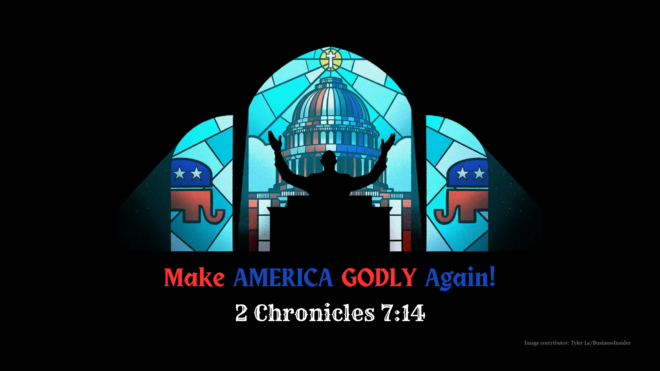Is there such a thing as a ‘Pentecostal philosophy’? James K. A. Smith says there is. They don’t necessarily talk about it in ways we are accustomed to, but he says they have one. And here are its major elements according to Smith:
1. A position of radical openness to God, and in particular, God doing something differently or new. . . . We might simply describe it as openness to the continuing [and sometimes surprising] operations of the Spirit in church and world, particularly the continued ministry of the Spirit, including continuing revelation, prophecy, and the centrality of charismatic giftings in the ecclesial community.
2. An ‘enchanted’ theology of creation and culture that perceives the material creation as ‘charged’ with the presence of the Spirit, but also with other spirits [including demons and ‘principalities and powers’] with entailed expectations regarding both miracles and spiritual warfare.
3. A nondualistic affirmation of embodiment and materiality expressed in an emphasis on physical healing [and perhaps also in gospels of ‘prosperity’].
4. Because of an emphasis on the role of experience, and in contrast to rationalistic evangelical theology, Pentecostal theology is rooted in an affective, narrative epistemology.
5. An eschatological orientation to mission and justice, both expressed in terms of empowerment, with a certain ‘preferential option for the marginalized’.
In terms of ‘radical openness to God’, Smith quotes the first Pentecost in Acts 2, where the appearance of the Holy Spirit looked and felt different from anything the apostolic community had ever experienced or read about in Scripture, but they were instantly able to see it as a work of God. Surely we have no business telling God what He can or cannot do: whether it includes putting myths and perhaps even a couple of fictional books in an inerrant Scripture, or maybe not being obligated to save ‘America’ or ‘Western Civilization’ but perhaps starting a new thing in completely different parts of the planet.
Let me make my own position clear. I am not a cessationist. It would not bother me if one of the small groups at our PCA church prayed in tongues. It would bother me if they thought they were somehow one step ahead of us, or on a higher level, because they did so. But I would argue that the miraculous can never be normative. It is the very nature of the miraculous to be exceptional. Christianity, as C.S. Lewis, is the one religion that absolutely requires the miraculous to be historical fact. But he also wrote a volume called The Problem of Pain, a usable devotional book by the way, that could also be called ‘Why Miracles Don’t Happen All the Time’. That’s the big question. Before I became a Christian at the age of 23, I doubted the possibility of the miraculous because, basically, “I wasn’t getting none of it.” I still, when I misplace my house keys or something like that, ask God, “Well, if you did all those things for people in the Bible, why can’t you levitate my house keys to me from wherever they are?” But no, the miraculous is exceptional. I would even say [and as a philanthropist I have had to work through this] that God can reveal to me to give a certain amount of money to a certain organization, or attend a certain event, or meet with a certain person, but that is not His normative way of operating. God is the Lord of both the miraculous and the non-miraculous. If we don’t see that, we are drifting into the heresy of Catharism. Christianity, for all its dependence on the historical truth of miracles, gave birth to science. I’m not sure that a Christianity that saw the miraculous as normative, as some forms of African Christianity seem to, could have done so.
As to an ‘enchanted theology,’ I believe that, even though the miraculous is not normative, the Holy Spirit animates the world and angels and demons do contend. “There is a deep sense,” says Smith, “that multiple modes of oppression – from illness to poverty – are in some way the work of forces that are not just ‘natural’. . . . Prayer and worship are a mode of struggle against ‘the rulers, against the authorities, against the cosmic powers of this present darkness, against the spiritual forces of evil in heavenly places’ [Eph 6:12]” Fine. I think it’s much healthier to recognize demonic forces than to blame everything on the Bilderbergers, the International Bankers, or the One Per Cent, or whatever. And there is a danger that we may come to take a magical view; as if we said our prayers the right way, we could empower God, rather than it being He who empowers us. Prayer and worship can be transforming; but I suspect that the transforming power of prayer and worship can only come from our making it the second thing, and the first thing to be an objective honoring of God, and our dependence on Him, not His on us.
Smith criticizes the attitudes of some Pentecostals who regard the material world as ‘evil’ while at the same time affirming bodily healing! He understands why Pentecostalism often veers off into ‘prosperity theology’ heresies. I’ll interject my own opinion here; ‘faith’ doesn’t in and of itself make you prosperous. But sometimes when you are transformed you lay off dysfunctional habits and attitudes that have been holding you back, and become a little more prosperous than you were. And so evangelical and Pentecostal upward mobility is a thing, and we are constantly having to start new works for the benefit of those who are still at the bottom. Max Weber accused the later Calvinists of holding to a ‘prosperity theology’; I have seen no evidence of this, only of the effect of the ‘Protestant Ethic’ that I have described – and you don’t have to be Protestant to benefit from it.
An affective, narrative epistemology. Story tends to come before propositions. Fine, but propositions are always assumed even if they aren’t articulated, and if the wrong ones are assumed, you can get off base very quickly.
An eschatological orientation to mission and justice – “an eschatology that engenders a commitment both to mission and to social justice, with a certain ‘preferential option for the marginalized’ tracing back to its roots in the fishermen at Pentecost.” The Azusa Street event was in fact an event of racial reconciliation, though it ended up giving us two churches; Church of God in Christ for the blacks, and Assemblies of God for the whites. The Pentecostal commitment to ‘social justice’ concentrates on empowerment and bears very little resemblance to the ‘evangelical left’s any sort of Left. And the poor seem to prefer it to ‘social justice’ churches formed by downscaling middle class people moving into the less affluent portions of the city. Though now, according to some sources, the Pentecostals are now losing their grip even on the younger poor and working class white Americans. Brad Wilcox et al suggest that Latinos and Blacks have a better theology of suffering than whites and so their faith is better able to stand up to adversity.
Smith then has a section on “Pentecostalism and Countermodernity,” which I could easily think of as ‘Pentecostalism and Postmodernity’. But it is strange that he writes a whole book on this subject without once referring to his Canadian countryman, Marshall McLuhan. I find it absolutely impossible to contemplate what Smith is writing about [or the appeal of Pentecostal and charismatic practices overall] without running it through what little I know of McLuhanian thought. According to McLuhan, how we receive input – whether visually, by ear, or by writing – influences how we think and how we view the world, and as Smith would hasten to add, what we desire and how we desire it. Thus, the spread of printing after Gutenberg gave us Protestantism, after people started paying more attention to the text; photography, starting in the 1840s, began to orient us more to the visual again; between 1920 and 1950 the dominant form was radio, which encouraged an oral listening culture in which Hitler, Churchill, and FDR prospered, and nobody cared whether they were good looking; after 1950 the rise of television, which began to reorient us to the visual again. Famously, there was a debate between presidential candidates Kennedy and Nixon in 1960 after which those who listened on the radio thought Nixon had the better of the debate, but those who saw it on television thought that Kennedy won. And we have not yet figured out what the effect of the internet will be; the mixed short text and pictures of Facebook, the abbreviated shrink-think of Twitter, and the picture orientation of Instagram will have various effects.
It seems clear to me that one of the things driving Pentecostalism is a move away from print-oriented culture. At the same time, Pentecostalism has not really produced great visual art; I suspect it is a predominantly oral culture, or where it is visual, ‘talking head’. Since I have been taken many places to see a lot of religious art, in churches or outside, I can testify that Catholicism and Orthodoxy are the visual branches of the Church, and that is a major part of their appeal. I have thought that Pentecostalism was a way of incorporating some of the myth, mystery, and miracle of Catholicism without the hierarchical baggage; I think it does, but its visual tradition is more about talking faces [and indeed a lot of people draw conclusions from being able to see the whites of one’s eyes that they can’t draw on radio] and not visual imagery. Besides, by the late eighteenth century even Catholics were starting to do bad and sentimental art! Sacred Heart of Jesus? How about, in memory of the late Dallas Willard, who always insisted that “Jesus was smart,” a cult of the Sacred Brain of Jesus?



